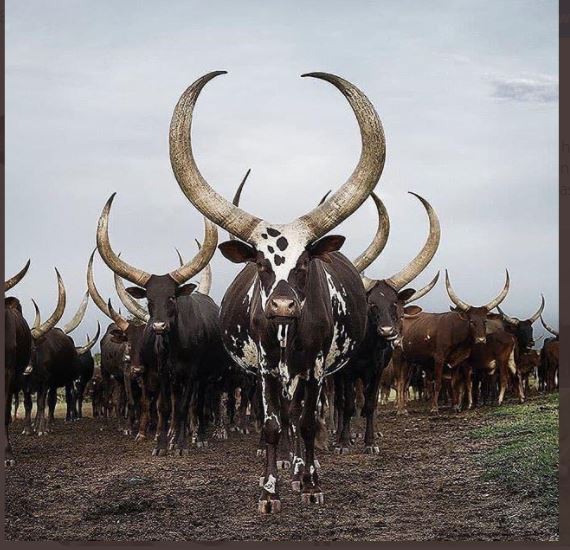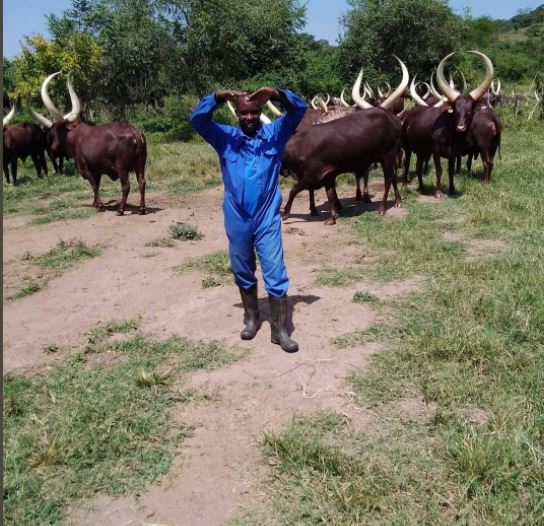
Cattle keeping in Uganda is one of the commonest income-generating agricultural activities, hence people engaging in dairy farming and beef production are agripreneurs.
This is because Cattle keeping in Uganda as an agricultural activity entails several by-products that come along the value addition chain, which range from processing milk and meat to hides, horns, crushing bones for calcium, among others.
It is thus important that every agripreneur who wants to join cattle keeping in Uganda for either beef or milk production has to learn a few things about the venture, so as to maximize the profits and reduce the losses.
Cattle Breed
Although there are many breeds of cattle in Uganda, starting farmers are advised to look out for the Ankole Long-horned cattle, because this breed has been found by agricultural researchers to have high-quality meat and milk, with proven resistance to tropical cattle diseases and pests.
Some of the prominent Ankole Cattle farmers include President Yoweri Museveni, social activist Frank Gashumba, minister Frank Tumwebaze, Monica Katabazi to mention but a few.
According to researchers from the Ministry of Agriculture, Animal Industry and Fisheries (MAAIF), these Ankole cattle are good to rear because they can survive in harsh conditions and can survive on less food and water, hence not easily affected by adverse climatic conditions.
With financial support from HIVOS (the Netherlands), PENHA-Uganda in collaboration with the League for Pastoral Peoples and Indigenous Livestock Development (LPP) and the Local Livestock for Empowerment of Rural People (LIFE) Network, the researchers carried out a study documenting the situation with respect to Ankole Long-Horned Cattle
According to their study, although Ankole cattle are reared mainly in Western Uganda in the districts of Isisngiro, Busheyi, Ntungamo, Mbarara, and Kiruhura, they have since spread to other parts of the country as agripreneurs embrace cattle rearing.
Monica Katabazi, a cattle farmer from Rwamukuku village, in Kiruhura District, says that Ankole cattle are the best for youth and low-income earners who want to get a fortune from cattle farming.
“Their beef is delicious, their ghee and milk are nutritious. Milk from exotic breeds like Friesians is watery compared to that from Ankole cows which are thick, creamy, and concentrated,” Katabazi said.
She added; “Youth and other local farmers are advised to start rearing Ankole cattle because they are less costly compared to exotic breeds. They can survive on little water and grass, yet are resistant to tick-borne diseases like Nagana and others because of their high immunity. Besides that, spraying indigenous Ankole cattle is less costly compared to exotic breeds since a farmer uses lesser quantities of pesticides.”
The cattle mainly feed on grass found in the vast lands and sometimes farmers give them supplements from banana peels, hay, plant cuttings etc to add on their diet.
“Even if it is drought season, so long as they have grass and a little water to drink they will survive because they can overcome even the worst climatic conditions,” Katabazi noted.
Unlike Friesians and other exotic breeds that need extra care and a re-enforced floor with concrete to avoid foot and mouth disease, Ankole cattle are easy to accommodate because all they need is a kraal with a fence since they are not affected by rain or coldness. The Ankole cattle do not need a lot of shelters since they can easily tend to themselves easily. According to Kamukama, all they need is a shed where they can escape to especially during rains.
According to Katabazi, the commonest diseases that affect Ankole cattle are Anaplasmosis (which results in fever and pneumonia), East Coast Fever, abdominal bloating, foot and mouth disease, brucellosis, trypanosomiasis, among others. However, she contends that these ones are very easy to treat using available animal drugs on the market, coupled with the high levels of immunity that characterize the indigenous Ankole cattle.
Types of Ankole Cattle Breeds
The Ankole cattle was reared by herdsmen who are believed to have come from Egypt with the Zebu cattle that originates from India and the crossbreed brought about the Sanga cattle family from which the Ankole cattle originates.
The Ankole cattle also known as the Inyambo by the locals are majestic, long horned animals which move long distances from one place to another in search of pasture and water.
There are three main breeds of Ankole cattle and these include:

The Bahema Strain
This one is found in the Northern part of Kivu near the Amin and Edward Lakes. The Bahema strain has relatively smaller horns as compared to the other strains and their color varies with time. This is the main breed that is reared in Uganda mainly for wealth creation purposes, by-products like milk and ghee, meat and to pay dowry.
The Tutsi Strain
This is majorly reared in Burundi near Lake Tanganyika and some parts of Uganda. The Tutsi strains have the largest horns and they are predominantly red in color.
The Bashi Strain
This one can be found in the southern part of Kivu near Lake Kivu.
The Kigezi Strain
The Kigezi strain is a bit rare but has some similarities to the Bahema strain. This can be found in the hills of Kigezi.
Higher Prices Than Other Breeds
The Ankole cattle are sold like any other cattle but go for a higher price as compared to the other breeds and this is due to their large bodies and long horns.
The cattle can be sold while still on the farms or transported to abattoirs in different city centers for sale. The Ankole cattle are normally bought by abattoirs who sell meat in large quantities all over the country.
They can also be sold through online advertising due to increased internet use by the people especially during the wake of the COVID-19 pandemic.
Katabazi, who has since built a permanent residential house out of proceeds from her cattle farm noted that “I earn over Shs50m every year because I sell milk, cows, bulls, and curves. I have achieved a lot from my cattle and I’m not like other women who want to stay in the city even if they are not earning. However, this work requires a passion for it.”
The Ankole Cattle Horns
Ankole cattle are not only used for food and milk but their horns are also sold for decorative purposes. Any lover of art should own these horns due to the wonderful designs that they form when placed in a room or when ornaments are curved out of them.
Advantages of Rearing Ankole Cattle
The merits of rearing Ankole cattle rotate around income generation.
For instance, apart from the beef, the milk got from the cattle is used for making ghee and yogurt due to its high content of fat.
The blood collected from the cattle after slaughtering is also used in making a local cuisine that is a delicacy to the locals
The cattle are used for strengthening social relationships especially when people go out to graze their cattle together; they are bound to improve on their relationship by talking about different issues and their cattle.
The waste from cattle especially the dung is used in building and as manure in gardens especially banana plantations. The cattle urine is also used for medicinal purposes by farmers.
The skin and hides from the cattle are used for making decorations and clothes, music instruments like drums, Adungu and others.
The Ankole Watusi cattle can also be used to crossbreed creating another breed of cattle.
